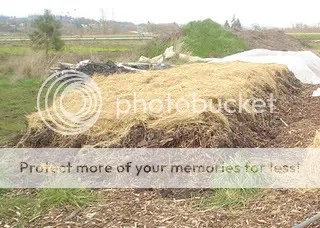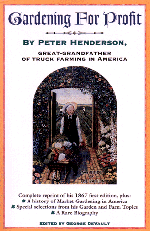Notes based on Gardening for Profit (Chapter 9) by Peter Henderson.
Hotbeds are something we don’t see a lot of, despite their simplicity and usefulness. The idea is that compost generates heat, and seeds need heat to germinate. So why not put seeds directly on the compost pile (the “hot bed”) and coax those little buggers into making their debut a little early in the season? Henderson was doing this in the 1800s, and the logic still applies today:

This is a freshly made hotbed at Singing Pig Farm. It’s about 2 feet tall, 8 feet wide, and 40 feet long. (Disclaimer: I’m terrible at judging dimensions, so give or take about 20 feet on the width and length.) It’s topped with a layer of straw to level the surface and provide additional insulation. Under the straw is a rotting pile of leaves and grass clippings, courtesy of a landscaping company that was happy to get rid of it. The temperature in the pile when it was formed was 105 degrees Fahrenheit. Read the rest of this entry »

 Back to home page
Back to home page

 Save this page on Del.icio.us
Save this page on Del.icio.us